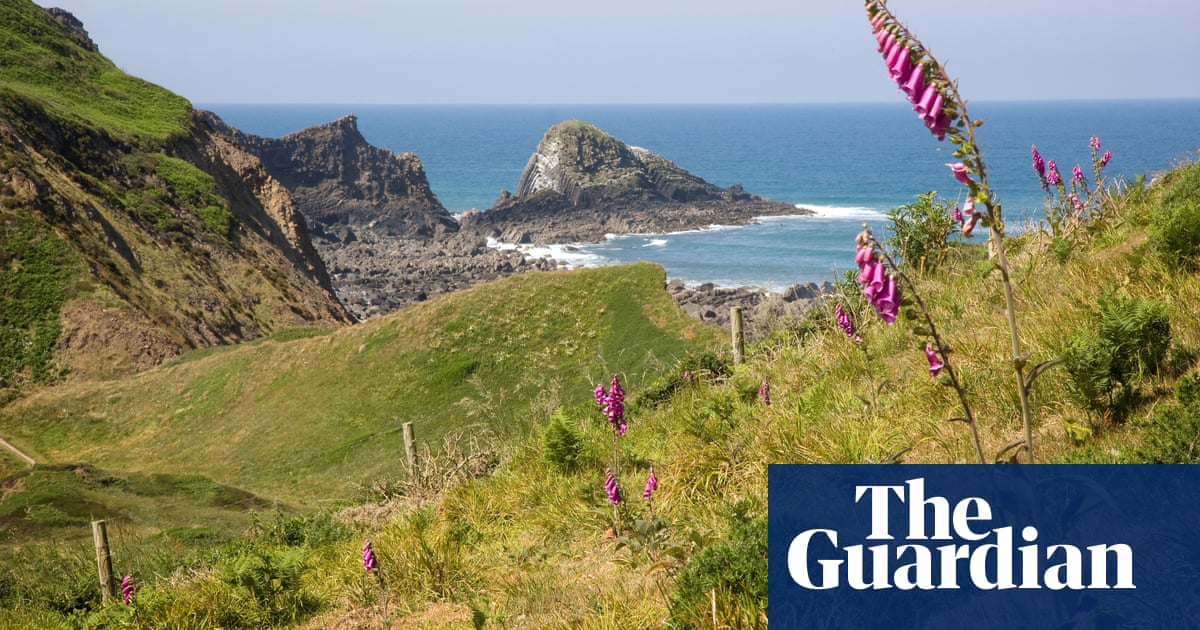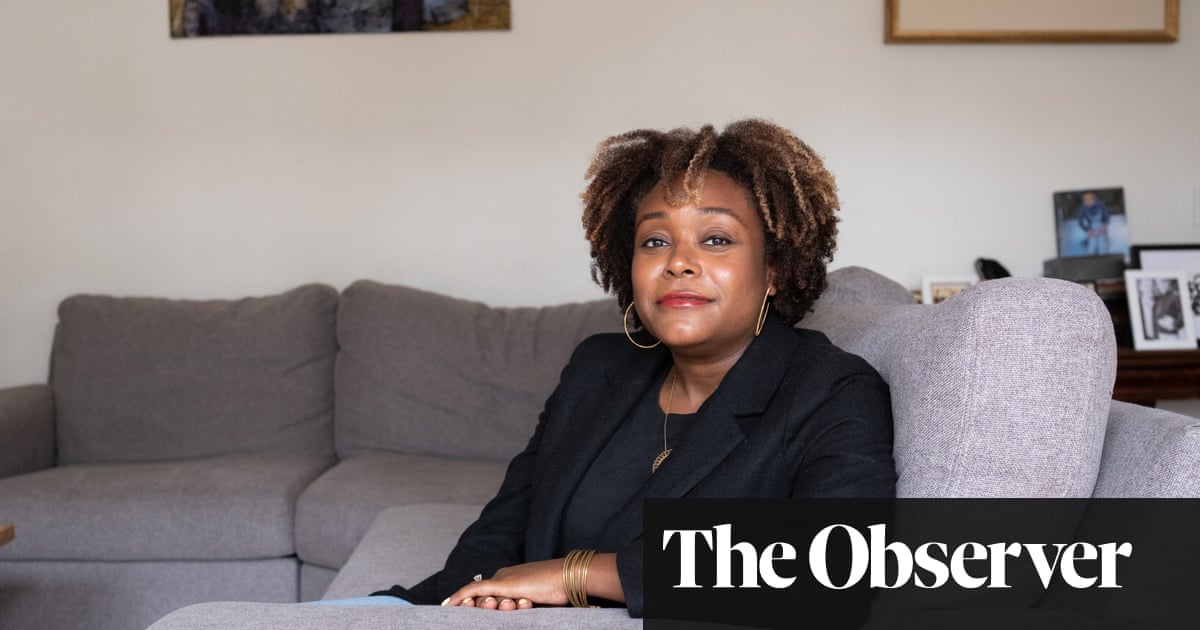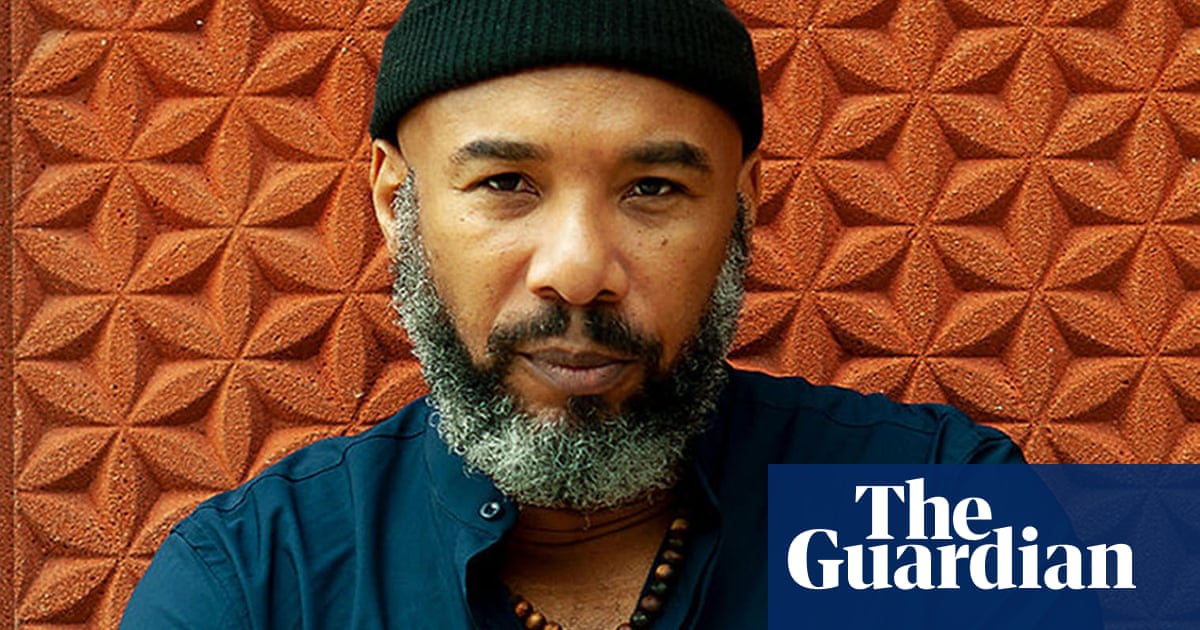
hen lockdown began, the forget-me-nots were blooming in the garden, a sea of pale blue. The lilac tree, too, was flowering, and the clematis I’d planted. They filled the air with scent as I sat outside on an unusually sunny April day, feeling fortunate to have this rented outdoor space, and thinking about my family, not knowing when I would next see them. These flowers all hold some significance for me – a lilac tree grew in the garden of my childhood home, as did clematis. There’s a photograph of me, aged about six, in a puff-sleeved dress, in front of a mass of pale pink blooms. In these strange times, the emotional resonance of plants has never felt more powerful.
The forget-me-nots came from my 86-year-old maternal grandmother Jean, my last remaining grandparent. They were the first thing I planted in this garden, four years ago. I have lived in the flat for almost a decade, but it was only in the summer of 2016 that we finally found the energy and enthusiasm to clear the 8ft-high knot of brambles. I was suffering from agoraphobia as a result of post- traumatic stress disorder, and my world had shrunk. So my then boyfriend, now husband, built me a garden. During that year, when I was frightened all the time, this sanctuary became my entire world. And so, during the pandemic, it has come to be again.
I was a complete gardening novice, so Grandma Jean’s advice was invaluable. She gave me seeds and cuttings – forget-me-nots (Myosotis scorpioides), primroses, love-in-a-mist (Nigella damascena), lavender. When I speak to her on the phone – she is locked down alone in Hertfordshire – we talk about gardening. She has had a lovely, large garden for as long as I can remember, and the plant that stands out the most in my memory is her ‘Compassion’ rose. The cutting she has planted for me waits impatiently for better times, so that it can be handed over and placed in my own garden, up against the fence in a newly cleared, sunny spot. It will be a meaningful reminder of our bond.
That, I am learning, is what seems to happen with plants. They carry so much history, memory and feeling within them, particular in families for whom gardening is a passion. They tell the stories of our lives, and of those who came before us. They are part and parcel of our ancestral history, binding the generations like stickyweed, winding their way through the family tree like the ivy I just can’t ever seem to conquer.
When we were told to stay at home, we dug a new flowerbed, and my uncle Ade sent me some cuttings in the post – geraniums and penstemons (also pleasingly known as beardtongues). I was grateful for the plants, which are thriving, but they also provide a link between us. Every time I look at them, I think about him.
“Plants have stories,” Ade tells me down the phone from Stockport. “Where they came from, who introduced them, who bred them, what they were used for, the myths and legends around them… all sorts of different things.
On top of that, we add on our own stories. Plants often are grown by people who had them in the family.”
To illustrate his point, he tells me the story of James JH Gregory, the seed merchant behind cherry tomatoes who, in the mid-19th century, introduced the Hubbard squash to the seed trade. An American, he donated more than 30,000 books to African American colleges. Ade now grows Hubbard squash and, in a sort of continuation of Gregory’s spirit, has donated them to food banks.
Ade is my father’s brother, and perhaps the most prolific gardener in the family. Like his five siblings, he got his passion from his parents, having shown an interest when he was 14 or 15. So gardening wisdom and enthusiasm have been passed down the generations, in some cases – like mine – lying dormant until needed.
Ade’s late parents, my paternal grandparents, Enid and Fraser (called Mamushka and Taid by the grandchildren) had a large garden at their house in Sale, Cheshire. Some of my earliest memories are from this garden, of Mamushka showing me fuchsia, which she called “dancing ladies”. “Do you remember how she’d always want to hold your hand when she showed you around the garden?” Ade’s twin sister, my auntie Ruth, recalls. I do. And I remember picking apples with her to make into purée, and strawberries from the patch at the bottom. Ade, meanwhile, would set us garden-based challenges, to go and find an oak leaf, or identify another plant.
Born in a Salvation Army home for unmarried women, Mamushka had a sad and difficult childhood, one without much money or love. She was born in Llandaff, but knew little of her origin. Growing the dahlia ‘Bishop of Llandaff’, therefore, provided an anchor to her uncertain past.
Mamushka had a relaxed attitude to taking cuttings. National Trust gardens came off particularly badly when she visited, armed with a plastic bag and a pair of secateurs. It has long been a slightly naughty running joke in the family, and I like to think I was channelling her when I snipped a tiny bit from a neighbour’s overgrown clematis this spring.
As I ring around my loved ones to ask them about our family history of gardening, I am offered various plants – Mamushka’s African violet, a peanut cactus grown by my great grandmother. I hear so many stories. My dad, who lives in the north Wales house that once belonged to his grandmother and tends the plants that his parents tended before him, reminisces about the little shed Taid, a doctor and microbiologist, built using the packing crate from the first electron microscope to be sent to St Thomas’ hospital. Auntie Ruth recalls the time that Taid decided to prove to Mamushka that lawn fertiliser wasn’t a waste of money, so quietly used it to spell out her name in giant letters. I gobble up these stories as I might the squash from Ade’s allotment.
At a time when we are all still distanced from each other, the tales remind me of my roots. As I plant my seeds and plan my new flowerbeds, I feel proud to carry on the tradition, and wish only that I could tell my grandparents about how I have come to love what they loved – making things grow.
The novelist and short story writer Eudora Welty said that “gardening is akin to writing stories. No experience could have taught me more about grief or flowers.”
I understand this. Mamushka died when I was 17, right in the middle of snowdrop season. It was one of her favourite flowers, and had been brought to her bedside by my uncle Simon when she was dying in hospital. Every February, her children meet up and go on a snowdrop walk in her honour.
“Plants keep people alive,” Ade tells me. When Mamushka died, Taid missed her terribly. “What he was able to do was keep her alive in some way through the colour blue. She had beautiful blue eyes and so he filled his garden with blue flowers. One of them was Anchusa ‘Dropmore’.” After a loved one is gone, it’s a comfort to have something still growing, still alive in the world, representing them.
His sister, my auntie Jane, has a corner of her garden full of plants from my grandparents’ garden – snowdrops, of course, and also a lilac, a horse chestnut, and a ‘Sutters Gold’ rose, bought for her by her dad. She also has some sea holly from Dinas Dinlle, the Welsh beach where Mamushka’s ashes were put into a giant sandcastle built by her children, who then stood and waited for the tide to come in and wash them away. Taid died suddenly in 2012, a great shock to all of us.
As spring progressed, I wondered when I would next see Grandma Jean. Will it be in time to smell the fragrant philadelphus outside her house, or the ‘Compassion’ in bloom? Or will we have to wait until lavender harvesting time? (Grandma dries it and sews it into little satin sachets for our drawers.)
We speak on the phone. She tells me she got her love of gardening from her father, Pop, who grew beautiful roses until they moved to Hartlepool where a bomb shelter took up most of their garden. He still grew vegetables, though, in a small corner, and later returned to growing roses, including, my mother says, a 1960s rose now a bit out of fashion: the ‘Super Star’ rose.
I wonder if the “Dig for Victory” campaign during the war cemented the importance of gardening to that generation, especially when it came to growing your own food. My maternal grandfather, Mike (Grandma Jean’s husband) used to make his own wine from fruit and foraged flowers. Four years ago, my husband started doing the same. He made elderflower champagne from the tree that overhangs our garden, and strawberry wine, also a favourite of Grandad Mike’s.
You could say we are drinking for victory, because we entered lockdown with more than 80 bottles of homemade wine, ranging from the traditional, such as elderberry, to the bizarre (parsnip) and the bougie (fig and rose). I joke that it is going to become the next hipster trend, and that he should capitalise on it, but really it’s not about that. I love that he is continuing a family tradition, and Granddad Mike would approve.
Gardening will also have provided respite for the many sorrows of the war generation. The mental health benefits of gardening are now well known, but the emotional benefits of being pulled back down into the earth will have been instinctive to many. There has been depression and anxiety in my family, and through no doubt a combination of genetics and events, that has made its way to me. I’m thankful that I also seemed to have inherited a form of antidote.
Perhaps, during this pandemic, gardening will come to be almost as important to my generation as it was to those who lived through the war. Already my peers are growing herbs and vegetables for the first time. Social media abounds with pictures of beautiful window boxes. To have a garden is a great privilege, but you can grow things in the smallest of flats. I’m in a WhatsApp gardening group with some of my husbands’ many siblings (he is one of nine), and we share photos of blossom and talk about what we are growing or digging. His sister Jasmine sent him some beans in the post, which we planted in pots on our windowsill. It’s another little connection, a reminder of the people we love.
Much like the life cycle of a garden, the pattern in our family seems to have come back around again – maybe one day I’ll be holding a small child’s hand, and taking him or her around the garden, telling them the names of the plants. Maybe, like Grandma Jean, I’ll grow cuttings for younger members of the family.
In the meantime, I buy some Nicotiana seeds to plant out the front, to remind me of a holiday to Greece that I took with my mum, where we stood in the evening light inhaling its wonderful scent at the side of a dusty road. And come autumn, I will send some seeds to my brother in his care home, or, I hope, take them to him myself. Last time I FaceTimed him, his carer mentioned that they’d like to do some gardening.
Then, a strange coincidence. One morning, I notice that one of the roses there still has a tag attached: it is a Super Star, bought for me by my husband, who could never have known about its association with Pop. I don’t know if I have been isolating for too long and have started making connections wherever I can, using the past to avoid being rooted in the present, but a shiver runs down my spine. Though the people I love are dotted all over the country, and others are gone, the tendrils that bind us feel stronger than ever.
It’s summer now, and the meadow in the garden has exploded, a sea of pink and red poppies and blue cornflowers, just in time for my birthday. I have an ‘Iceberg’ rose to plant, sent by my father, who grew that same rose as a boy. In the corner, the ‘Super Star’ rose makes a spectacle of itself in vivid coral. Grandma’s forget-me-nots have died back, but I’m not mourning them. They are, after all, called that for a reason.
The Tyranny of Lost Things, by Rhiannon Lucy Cosslett, is published by Sandstone Press. Buy a copy for £8.99 at guardianbookshop.com.












